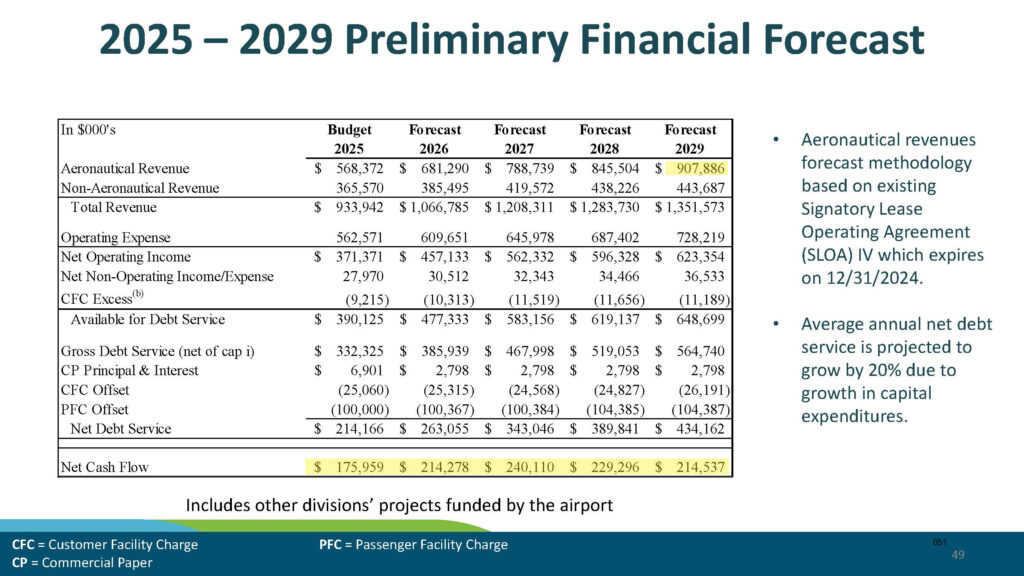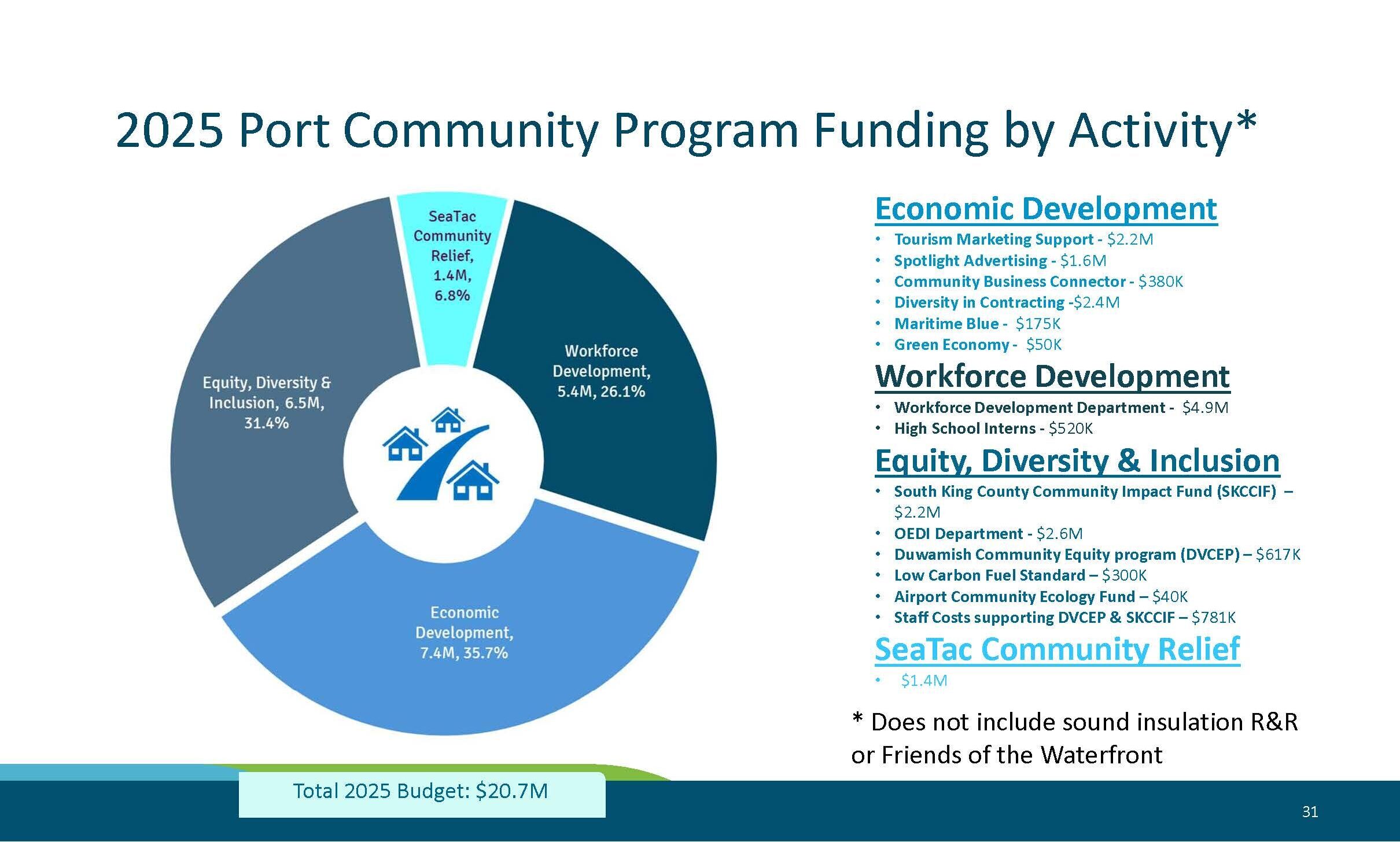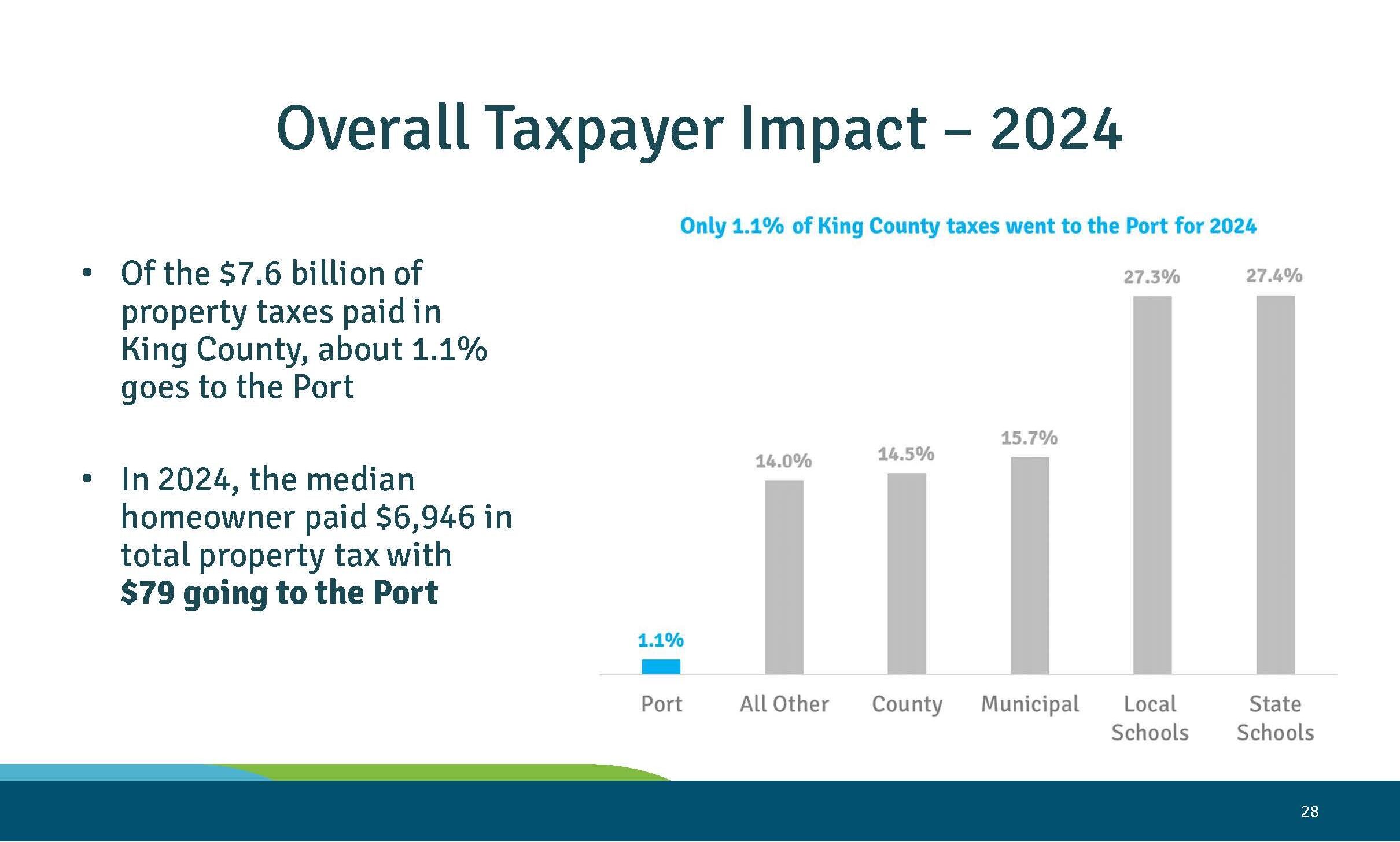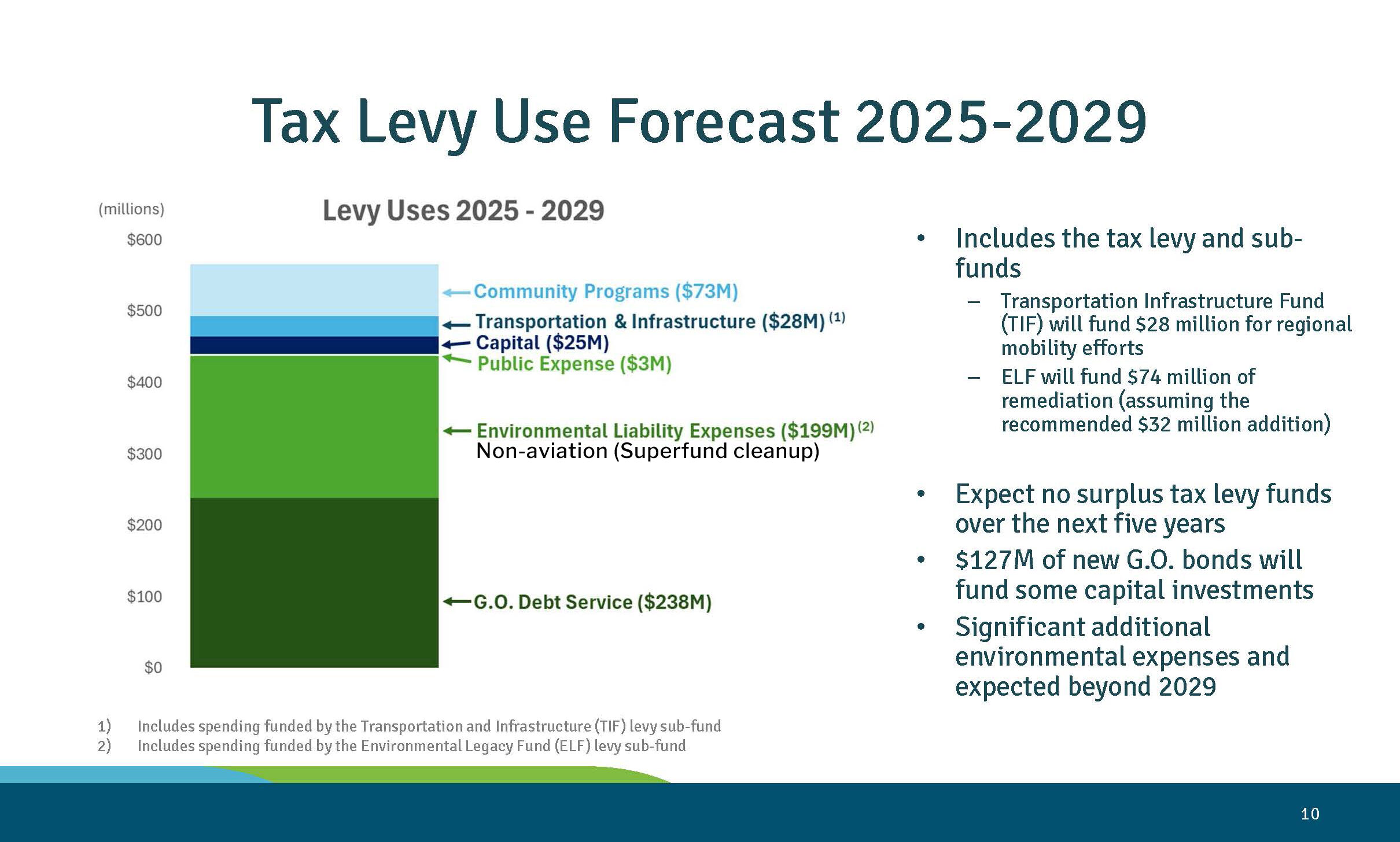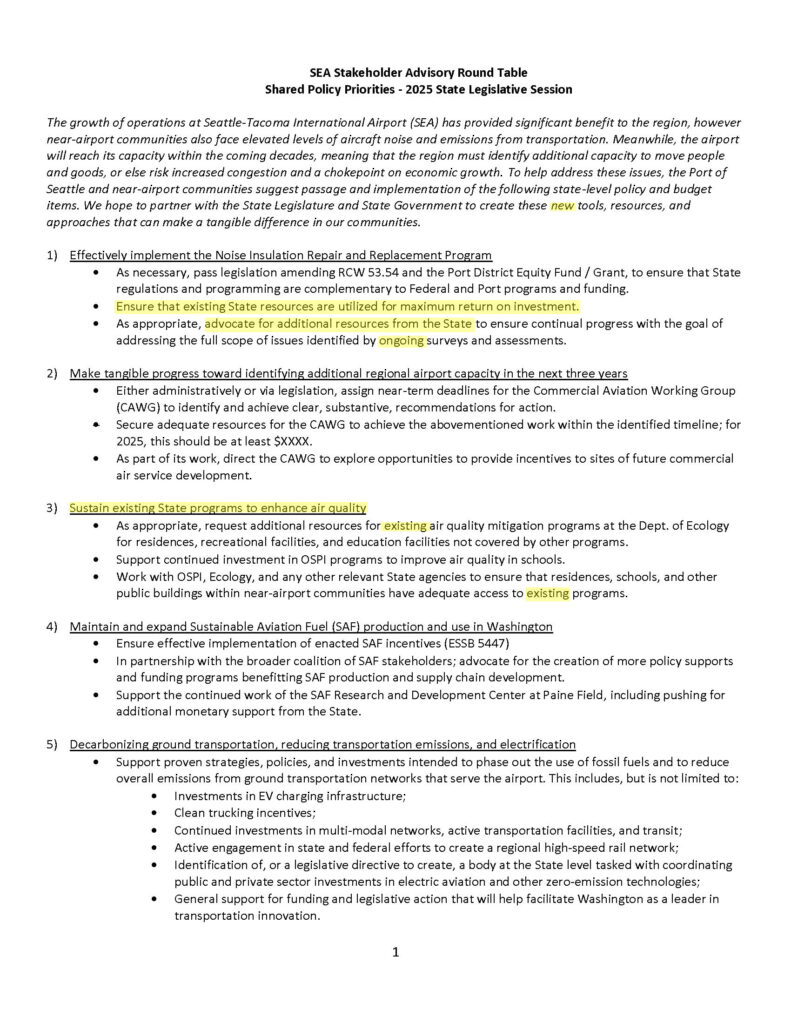Many people concerned about all the flights from Sea-Tac Airport rightfully think about “making the planes go somewhere else.” Changing the flight paths. That matters. But while we’re working on that, we should also focus on a much easier task, which we don’t focus on: doing what we can to mitigate the impacts of the flights that will inevitably be going over our heads.
Since the Third Runway opened in 2008, flights have increased dramatically. The SAMP will increase flights by just as much.
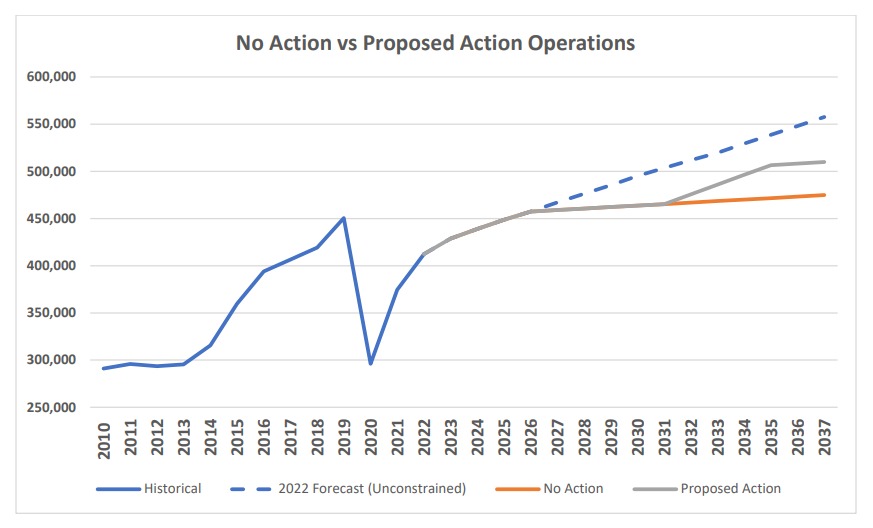
Appendix A: Forecast and Operational Assumptions
And yet, the SAMP Draft EA offers no mitigation for air quality, no mitigation for noise, no mitigation for cumulative community impacts!
Port of Seattle SAMP EA Presentation
At the same time, Sea-Tac Airport is now generating record aviation revenues. According to the Port’s own budget forecasts, it will continue generating record revenues every year as flights increase. Mo’ flights. Mo’ money.
Port of Seattle 2025 Aviation & Marina Budget presentation
On top of that, the Port has a taxing authority which costs the average King County property owner only $79 a year. The Port uses the vast majority to help build more airport capacity. Only 13.5% of the tax levy is budgeted for ‘community grants’. Most of that goes to help people nowhere near the flight path! And almost none goes to provide relief from from aviation impacts!
Port of Seattle 2025 Draft Plan of Finance Property Tax Levy presentation
![]() In 2018, the Port created the Stakeholder Advisory Roundtable (StART), as an FAA ‘community engagement’ program. You probably don’t know about StART or their work because their meetings are not recorded. Neither the FAA or Port Commissioners also don’t know much about StART because they don’t attend their meetings either. But every year the Port creates a shared lobbying agenda to advocate on our behalf in Olympia and Washington D.C. Even with all the increased impacts of the SAMP, the group only lobbies for existing programs. Their agenda has done nothing to reduce the negative impacts of aviation. Instead, it calls on the State of Washington to do more for programs like sound insulation, while ignoring the Port’s own ability to address airport impacts directly.
In 2018, the Port created the Stakeholder Advisory Roundtable (StART), as an FAA ‘community engagement’ program. You probably don’t know about StART or their work because their meetings are not recorded. Neither the FAA or Port Commissioners also don’t know much about StART because they don’t attend their meetings either. But every year the Port creates a shared lobbying agenda to advocate on our behalf in Olympia and Washington D.C. Even with all the increased impacts of the SAMP, the group only lobbies for existing programs. Their agenda has done nothing to reduce the negative impacts of aviation. Instead, it calls on the State of Washington to do more for programs like sound insulation, while ignoring the Port’s own ability to address airport impacts directly.
The Top Ten List
- Between the time the Third Runway opened in 2008 and 2017, Sea-Tac Airport grew from 17th to 8th busiest airport in America. Why does the SAMP only consider growth from 2017 on?
- How can there be so many new flights and yet no required air quality mitigation?
- How can there be so many new flights and yet no required noise mitigation?
- How can there be so many new flights and yet no required cumulative mitigations?
- What are the real economic benefits of the airport for my community? Not ‘jobs’ or ‘economic development’ or ‘environment’ somewhere else. Actual benefits that stay in my community?
- Why is so little of the property tax we pay the Port coming back to airport communities? And why is almost none of it allocated for direct impacts of aviation on health and environment?
- Why is the Port’s entire legislative agenda about getting the State and Federal governments to provide more money for programs like sound insulation? Why can’t the Port just spend more of its own money?
- Why does the Port’s legislative agenda only support preserving existing air quality programs? Those do nothing for us! Instead, why isn’t the Port pushing to improve on those standards, including spending its own money to fund research and mitigation for aviation-specific emissions? Could it be because it doesn’t want aviation emissions regulated to safe standards?
- The Port argues that it is limited in what it can do by State and Federal law. If so, why isn’t the Port making an effort at both the State and Federal government to change that so it can spend its own record profits to help our communities?
- Why can’t the Port simply live up to its 1976 promise, “As we do better, you’ll do better”? Develop a progressive system of compensation and mitigation for everyone directly impacted by the constant growth of Sea-Tac Airport.

